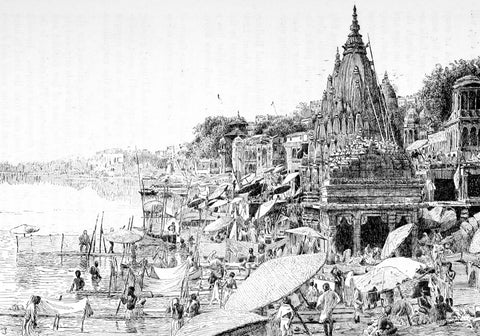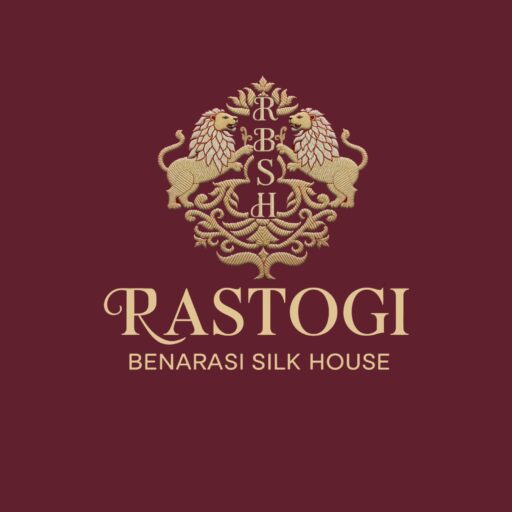
From draping the silhouettes of royalty, to being a reigning force in the modern world, the Banarasi saree has come a long way. This exquisite form of sarees are one of the most sought after in the country, known for their opulence and grandeur.
The sarees are known for their intricate brocade- zari work made with gold and silver, as well as their finely woven silk and detailed engravings. Even with the leaps in technology that are available to us today, the ancient city of Varanasi has revived the handweaving technique to a significant extent. The skilled artisans from the city use incredible precision to weave the sarees using gold and silver threads.
BIRTH OF BANARASI
The history of this grand legacy can be traced back to mentions in the Mahabarata. It’s history is one that is entwined with that of Indian culture. It began to find solid ground in the literature from the 19th century. Following a devastating famine, silk weavers migrated to Gujarat in the 17th century.
The Mughal empire is largely to thank for the introduction of the Banarasi saree in the country. The exceptional craftsmanship required to weave this silk, was brought in by the Mughals who made significant efforts to elevate the art of weaving and designing. This led to the birth of many a weaver who took to the silk. It was only when the sarees were finished that the realization took hold- that they weren’t just weavers but artists. The Mughal empire’s influence can be strongly seen in the Banarasi silk we drape today with the Persian motifs that were often mixed in. With the brilliant minds of the country, and the unparalleled skill of the weavers, Rastogi Benarasi Silk Saree grew to be the textile capital of the region.
As the silk flourished, so did the city and it’s riches. People then and now, flocked to the ancient city for a touch, a feel, a drape of the exquisite material. Banarasi sarees, began to create art in the world of sarees and silk. The royals craved the material and the sarees began to find their way to many a queen and princess. The opulence has not dulled over the years; rather it has only flourished.
IN THE MODERN WORLD
The sarees occupy a highly sought after place even in today’s day and age. The Banarasi saree still reigns in the world of silk and sarees. The city of Varanasi has worked tirelessly to keep the art and the culture alive. In the modern world, and for the modern woman, the Banarasi saree still serves as a sign of royalty.
Earlier, the Mughal influence was the strongest that could be seen in the sarees. The silk was imported from the Orient, whereas now, it makes its way from the southern parts of India. The Persian motifs being used in the weaves have now trickled their way down to create the flowery pattern of Banarasi sarees that is so characteristic of the silk. The special features and designs of the sarees still speak of it’s Mughal roots. Thus, the art of an empire from centuries ago, appeals even to the digital age.
The fight to keep the Banarasi saree alive saw a glorious victory in 2009. Following competition from the machine led industries and the new age of weaving which did not require artisans, the art faced a significant threat. However, the ruling of 2009, declared that sarees or brocades coming from anywhere other than the six districts of Azamgarh, Jaunpur, Bhadohi, Mirzapur, Chandauli and Vanarasi would not be eligible for sale under the prestigious name of Banarasi sari and silks.
LEAPS AND BOUNDS
Like every industry and every art, the world of Banaras has also seen the need for innovation. While the age-old techniques and skills remain untouched, there are newer elements that have been incorporated.
Younger designers, both couture and costume, have found themselves reaching for Banarasi sarees for that touch of elegance. Many a bride has draped her silhouette in the precious silk, and thus, the saree has found a home even in the wedding industry. The silver screen is not far behind either and there have been several familiar faces wrapped in a swathe of Banarasi silk.
The newer innovations have resulted in a perfect marriage of the old and new. However it must be said that the most popular of the designs still remain the traditional ones that were born all those centuries ago.
The Banarasi saree was born in a time before the digital, before many of our ancestors were even born; before our country had found independence. And yet, the saree and the silk have flourished, thrived and excelled in the centuries that followed its birth. The silk continues to reign, and the ancient city continues to serve its glorious purpose.
